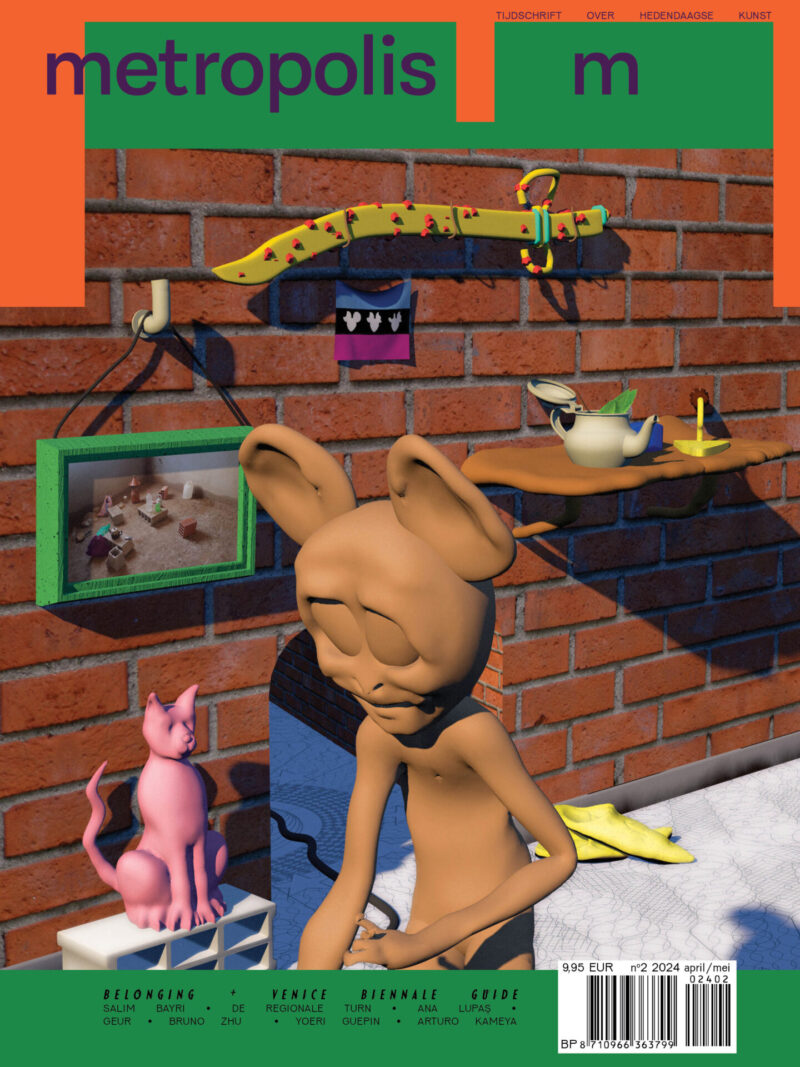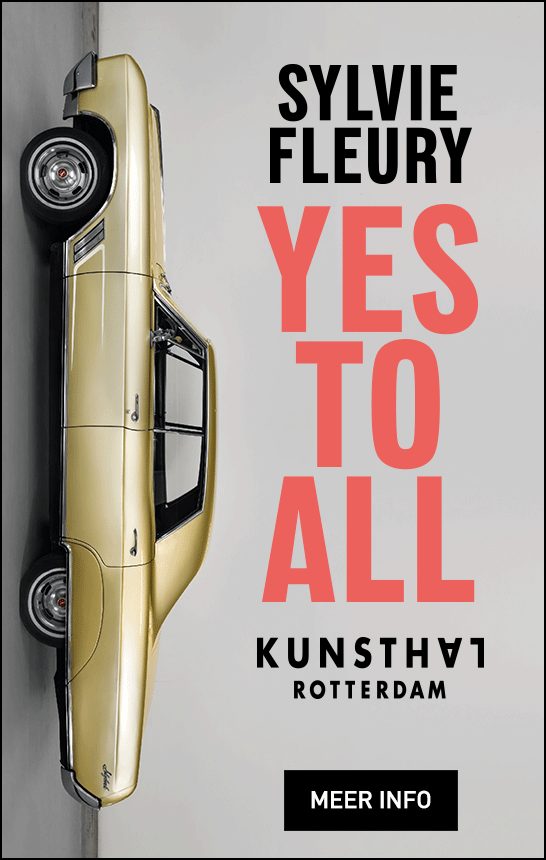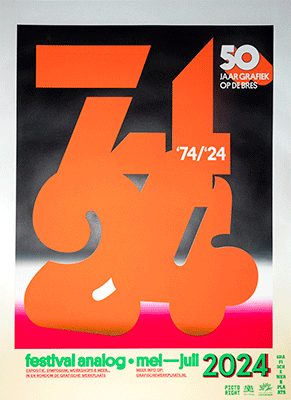
Cihad Caner, still from ‘(Re)membering the riots in Afrikaanderwijk in 1972 or guest, host, ghos-ti’, courtesy the artist
‘It’s important to me that people know about the history of their own neighborhoods’ – in conversation with Cihad Caner
Earlier this year, Caner presented his artistic research into the 1972 riots in Afrikaanderwijk at Rijksakademie. Now he is organising workshops on this topic at two primary schools in the Rotterdam neighbourhood. The outcomes of these sessions will be published in the beginning of 2024. Leana Boven asks him about his ongoing interest in Afrikaanderwijk.
At the Rijksakademie Open Studios this year you presented the work (Re)membering the riots in Afrikaanderwijk in 1972 or guest, host, ghos-ti. Could you introduce us to this research that preceded it? You looked into the riots taking place in 1972 in Afrikaanderwijk, a neighborhood located in the south of Rotterdam. What triggered these riots?
‘The riots started with a rent dispute between a Turkish landlord and a Dutch tenant. She didn’t pay her rent for a while, so she was evicted from her place. This sparked angry and frustrated responses from Dutch people: “How is it possible that a Dutch woman could be kicked out by a Turkish landlord?”, they wondered. Groups of people travelled to Afrikaanderwijk to riot, burn down places, throw stones through apartment windows and destroy houses. The riots started on a street called “Goedehoopstraat” and then spread to what was then called “Parelstraat” and surrounding streets, such as “Kaapstraat”, “Wapenstraat” and “Slaghekstraat”. It was a massive event. During the day it was quite calm, but after dinner time, people would come out. While these riots lasted for around ten days, they are now completely forgotten. How come such a big event has been forgotten in regional and national collective memory? That question became the starting point for my research.’
How did the project evolve from there?

Cihad Caner, still from '(Re)membering the riots in Afrikaanderwijk in 1972 or guest, host, ghos-ti', courtesy the artist
‘Wondering how to remember this event I decided to interview several people that either took part in the riots themselves or were its witnesses. Unfortunately, most people that were present at that time have passed away. It wasn’t easy for me to find people to interview, but in the end, I found five. They told me about their stories from their specific points of view. Interestingly, these personal testimonies shared different understandings of what happened. For example, one person remembered the Parelstraat being given another name during the riots: Hollandsestraat 2. This person explained that they suddenly couldn’t find the street anymore. Yet another person did not recall the name change at all. When something is largely forgotten, I then realized, it is very difficult to find the truth. That did not bother me though; I was not looking for something concrete or fixed. For me, it’s the memories themselves that I want to engage with: fluid and subjective as they are. As I started thinking about ways of bringing this history into the present, the idea of re-enactment came up. Through re-enacting a traumatic event, one could also start to heal from this event. I invited five young people, all of them in one way or the other connected to Rotterdam. Together we re-enacted the testimonies and recorded them for the film.’
‘Wondering how to remember this event I decided to interview several people that either took part in the riots themselves or were its witnesses’

Cihad Caner, still from '(Re)membering the riots in Afrikaanderwijk in 1972 or guest, host, ghos-ti', courtesy the artist
Could you give an example of a character whose story is re-enacted?
‘One story that is included for example is the story of Nelly Soetens, who protested in front of the Stadhuis Rotterdam against the riots. She is an important figure in the project as she was part of the Aktiecommitee Pro Gastarbeiders, and very vocal about protecting guest workers. Unfortunately, I wasn’t able to interview her because of health issues, but I used an interview she gave on a local radio station.’
Who did you work with for the film?
‘The participants in the movie are Ahmed Emin Batman, Mandy Franca, Merve Boyuk, Yalou Groeneweg, Niyazi Güveli, and Mahmoud Mokkadem. I also invited artist Hannah Dawn Henderson, who has done extensive research into the street names in Afrikaanderwijk and their direct colonial ties, to collaborate. In the film, you hear Dawn Henderson read from her research while we are taken on a walk through the streets of Afrikaanderwijk. The camera is tracking the streets, which has this kind of YouTube aesthetic of people walking for hours through big cities, and shows the present-day surroundings against this backdrop that is the voice of Dawn Henderson reading from her essay on Afrikaanderwijk’s street names. This is the first of the three layers the film exists of.’
What are the other layers?
‘The second layer is about the riots, and the third layer is about present-day processes of gentrification unfolding in the Afrikaanderwijk. This last layer goes deeper into the wiped out history and local stories. I use the word “layer” rather than “chapter” because the film does not have a beginning or ending; it follows a non-linear narrative. During the Rijksakademie Open studio presentation, you could enter the space any time and the film was on a constant loop. I think it is also important to mention that each episode is filmed in one shot, so there is no cut. Matija Pekic (the cinematographer I collaborated with) and I decided to use the camera as an agency, rather than something passive and static, to bring some ghostliness to the film.’
Talking about gentrification, I think it is important to highlight some recent developments in the Afrikaanderwijk and particularly in the Tweebosbuurt located there. In 2021, 535 social houses were completely demolished in that neighbourhood by housing corporation Vestia together with the Municipality of Rotterdam. Families with a migrant background were disproportionately affected. Looking at this continuation of discriminatory policies and regulations in the Afrikaanderwijk over the years, I wonder what stories you have heard about the gentrification taking place in that neighborhood?
‘One of the persons I’ve interviewed, Herman Buddenberg, told me how the neighborhood is becoming a neighborhood for yuppies. In the film we hear him say: “Everything is being demolished. It’s all being done secretly.” While we listen to him talking, the camera tracks the streets of the Tweebosbuurt. We see rubbles and destruction, but also a modern and shiny skyline; this exact tension is also felt by those living in the neighborhood.’
In your film we do not only meet people. We also catch glimpses of Hortensia and Lilac flowers and a stone with googly eyes. Could you share more about these characters?

Cihad Caner, still from '(Re)membering the riots in Afrikaanderwijk in 1972 or guest, host, ghos-ti', courtesy the artist
‘Back in 1972, it was said that guest workers didn’t have any plants. For the rioters, the absence of plants therefore became an indicator of apartments that belonged to guest workers. The idea of incorporating the flowers came from one of the interviews; I look at these flowers as ghosts from the past that continue to haunt us in our time. I am really interested in history and the continuation of certain ways of thinking and being. That is why I take certain characters from the past and bring them into the present: to show that they are still relevant in our times. The same goes for the stones; I was told guest workers collected the stones that were thrown through their windows. I assume they did so for evidence. For this project, I introduce the flowers and stones as witnesses. Normally I make my 3D CGI (digitally animated) characters talk, sing and dance, but this time I didn’t want them to do anything, except for witnessing the events unfolding in front of their googly eyes.’
‘I introduce the flowers and stones as witnesses. Normally I make my characters talk, sing and dance, but this time I didn’t want them to do anything, except for witnessing the events unfolding in front of their googly eyes’

Cihad Caner, detail from '(Re)membering the riots in Afrikaanderwijk in 1972 or guest, host, ghos-ti', courtesy the artist
Could you elaborate on the title of the work: ‘(Re)membering the riots in Afrikaanderwijk in 1972 or guest, host, ghos-ti’?
‘Since the work speaks about guest workers, I was curious about the etymological origins of the word “guest”. While the guest workers were invited here, they were not met with hospitality, but with hostility. Later on, I realized that “guest” and “host” come from the same linguistic root. The word they come from is ‘ghos-ti.’ The title of my work shown at the Rijksakademie is long, because I wanted to include everything and did not want to enforce this binary between guest and host. I wanted to bring in multiple voices, because this work is not only about the friction between guest and host. It has multiple layers and voices that I also wanted to carefully examine.’
I find it fascinating that the stones – witnesses of sad and intense events – have these ‘funny’ googly eyes. It’s almost as if they don’t know how to process their memories and feelings. This makes me think of your earlier work Demonstrating the Untamable Monster, exhibited in TENT and MAMA Rotterdam in 2020: a work about monsters and haunting, and about ‘othering’ and feeling alienated.
‘Demonstrating the Untamable Monster also started off with research into the origins of a word, namely: “monster”. The word “monster”, both in English and in Dutch, stems from the Latin word “monere”, which means: “to warn”, but also from “monstrare”, which means “to show” or “to expose”. So, in its etymological origins, the word “monster” signals a warning, an action, and does not necessarily mean something is supernatural. The project had a main question, namely: how has the image of the “other” been represented as a monster in the media? Different bodies (queer, women and migrant) talk and sing about their experiences moving through the world in monster bodies. These projects are all related to each other in a way because they talk about violence.
Could you elaborate on the woodcarvings that were part of the installation?
‘I wanted to create an immersive space for visitors; one that is not merely directed at the film. I created windows to play with the idea of insider vs outsider and interior vs exterior, because these notions were quite present during the research. The carvings depict visual imagery based on actual archival footage from the riots, as well as flowers and ornaments.’

Outcome of Cihad Caner's workshop with children from OBS Nelson Mandela, a public school in Afrikaanderwijk

Outcome of Cihad Caner's workshop with children from OBS Nelson Mandela, a public school in Afrikaanderwijk
What are you currently working on?
‘I am working with two schools in Afrikaanderwijk to share my research on the riots with the school children. It’s important to me that they know about the history of their own neighborhoods. We work with archival materials, and the young students can trace the archival visuals of the neighborhood on carbon paper and reinterpret the patterns. The results are stunning and quite abstract, contrary to how it was depicted originally in its quite straightforward documentary format. Each class uses one or two carbon papers to create a collective memory of the riots. The outcomes of these workshops will be presented together in the form of a publication, to be published beginning of 2024. It is important for me that this publication is created together, so that this part of history and their stories will be remembered collectively.’
Leana Boven
is a curator, cultural programmer and researcher with a background in gender and (post)colonial studies. She curated the exhibition On Collective Care & Togetherness at MAMA in Rotterdam, and currently works as a curator at Casco Art Institute: Working for the Commons





















